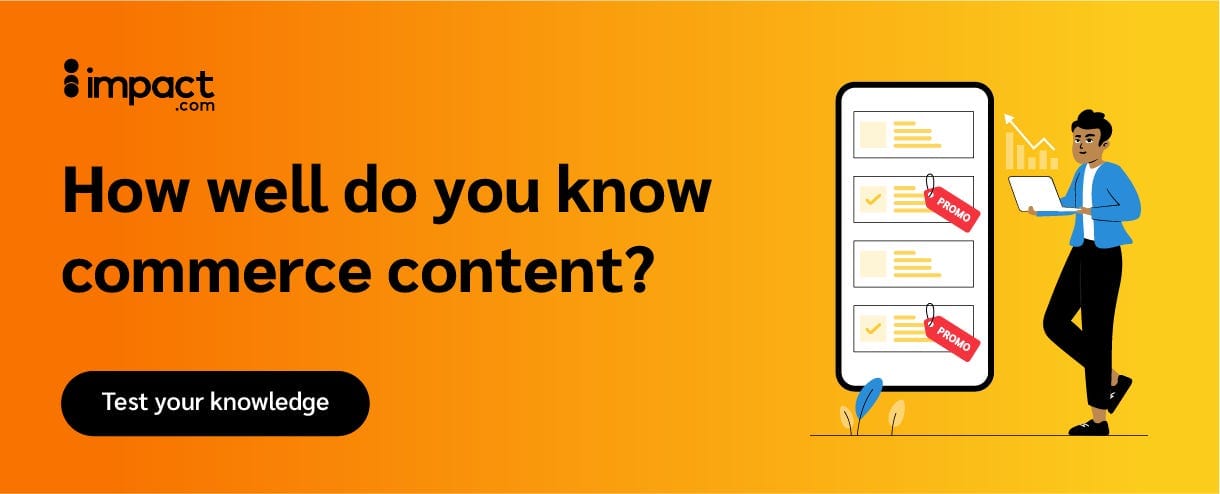More with less
Time to get lean.
August is here. I’m writing this edition of the newsletter from Belgrade before heading onto Istria in Croatia. Any recommendations near Portorož and Grožnjan are appreciated. Just hit reply.
Reminder: We are embarking on our first research project, in collaboration with VideoElephant. If you’re at a publisher and thinking about your approach to video, please take this two-minute survey that will become the basis for a report we’ll release next month.

Scale your commerce content with these resources

Is your team the best of the best when it comes to commerce content? Use impact.com’s new knowledge base to test your team (and yourself). Jump into the 2023 Commerce Content Hub to learn how:
- Industry leaders streamline and scale their commerce programs
- Commerce content programs contribute to publisher revenue
- Publishers plan to grow their programs this year and beyond
More with less

There are signs that the ad market is improving. With the U.S. economy resilient and inflation falling, green shoots of optimism are appearing.
Google and Facebook are seeing strong growth, even after cutting a combined 22,000 employees this year and Mark Zuckerberg’s declaration of a “year of efficiency.” For Facebook to grow a massive ads business by 12% is amazing. Publishers a fraction of the size aren’t seeing that kind of expansion. Google continues to be a juggernaut, never mind its latest ding for spreading ads to dubious places. These businesses are teflon.
Add in to that the growth of retail media and streaming. And then, keep in mind that digital advertising is a mature industry. Advertisers are spending two thirds of their ad budgets in digital. For many years, the digital ad industry was in hyper-growth phase. It was all up and to the right, even if big portals and then platforms gobbled up the majority and publishers fought for a piece of the rest. It was still growth.
The challenges to advertising, and the reality that subscriptions and commerce will not make up for lost advertising in most instances, presents publishers with a set of difficult choices. Without growth, they will need to cut costs, which will hurt the product even more, even as the competition for core business lines like advertising intensifies. That’s doom-loop territory.
The most promising models are narrower and smaller, often catering to elite audiences of business or political decisionmakers, lifestyle segments that lend themselves to commercial transactions or front operations for other more lucrative businesses in completely different categories.
In Axios, Sara Fischer highlighted success stories of niche B2B plays like Payload (space), Charter (work) and The Ankler (Hollywood). I like all three of these businesses. But it’s a different ballgame celebrating publishers crossing the $1 million revenue mark. They all raised modest events at fairly modest valuations. Promising new models like Punchbowl, Puck and Semafor are still of modest size, and all oriented to professional or elite audiences. I greatly admire what Jessica Lessin has built at The Information over nearly a decade. It’s also a relatively small company with about 80 people. I don’t understand Air Mail, but it mostly works as a commerce play. That The Messenger’s goal of $100 million in revenue was deemed laughable is a testament to reset expectations.
The New York Times is a juggernaut and an exception to nearly every norm. There will not be a dozen New York Times. I’m not even sure if there will be three. The Times is on its way to being a news and lifestyle brand for progressives in and around urban areas. Much of its growth will be fueled by games, cooking and other news-adjacent offers. In the first quarter, the Times digital ad business contracted by 9% and is expected to decline more in the second quarter. The Times’ digital ad business is now just 10% bigger than its “other” category, which includes licensing, affiliate, events, among other incremental revenue streams.
Even ESPN is looking at a more austere future of losing the sweet dual revenue streams of affiliate fees and ads. The economics of streaming are different, as Parquor’s Andrew Rosen and I discussed this week on The Rebooting Show.
In my conversation with Semafor’s Justin Smith last week, he made a point that sequencing growth is different. It requires discipline,” he said. One of the reasons Semafor has zeroed in on Africa, where they have 100,000 subscribers to the Semafor Africa newsletter, is you can do more with less there thanks to cost differences. “You can have a strong footprint with a more limited investment,” he told me.
Publishers need to drive productivity and be capital efficient, because there isn’t a lot of investor money that’s going to be deployed to typical media models. The layers of EVPs at Vice Media won't be repeated. Building mass newsrooms to pump out filler content of a series embedded tweets for pageviews is passé. Even The New York Times can’t justify having duplicative sports operations. Insider’s use of AI to produce bullet points won’t end there. All the hand-waving that AI isn’t about replacing workers reminds me of what Bill Clinton’s impeachment defender Dale Bumpers said during his impeachment trial: “When somebody says it’s not about the sex, it’s about the sex.”
Jeff Bezos was onto something when he questioned why The Washington Post needed so many editors and “indirect” staffers. The framing was he just needed to be educated by the top editor about how important editors are, but a more-with-less era requires directing scarce resources to those writing stories, not writing Slacks asking where the stories are. Publishers will need fewer, better editors – and ideally ones who also write. I don’t understand editors who just go to meetings all day. Better to be a player-coach than sit on the bench in a suit.
Publishers need to find leverage in their models by covering just as much ground with fewer resources. AI will help, as Mark Stenberg detailed in very early uses by publishing sales forces. Think about newsletters and podcasts. These are typically built by one person or a couple people. That provides leverage that doesn’t exist with a larger enterprise. Simpler models and executing on the basics will trump convoluted approaches like the Vice corporate org chart that’s reminiscent of how a Russian oligarch would structure their operations to evade sanctions.
The more with less era arrives at the right time. The overall labor economy, at least in the U.S., is shifting to more flexible work. The all-or-nothing full-time employee model is broken. The fight over the return to the office is really a fight over autonomy, in my view. I agree with Rishad that the flexible Hollywood model will become more the norm. That should result in more flexibility both for workers and for companies needing to do more with less.

Are you maximizing your video revenue potential?
Is your video revenue growing, or is your strategy half-baked? Ex.co is the publisher video platform that can double your OVP RPMs. It’s everything a publisher needs to manage a winning video strategy: premium content contextually matched to articles, machine-learning-based yield engine and no upfront license fee or costs.
On this week’s episode of People vs Algorithms, Troy Young and I discuss what a more-with-less era means for publishing, and whether scaled models can ever work. I also give my travel report from Belgrade.
Thanks to Impact.com and Ex.co for sponsoring this edition of The Rebooting. Check out our sales kit to learn more about partnerships.




